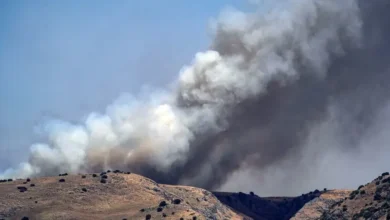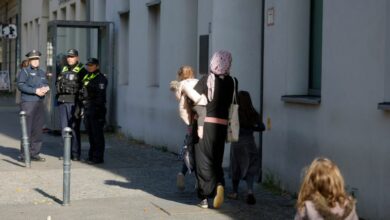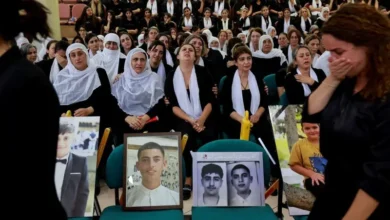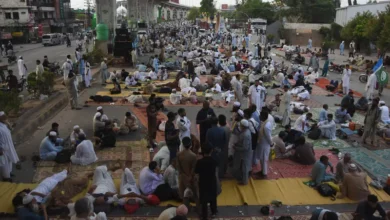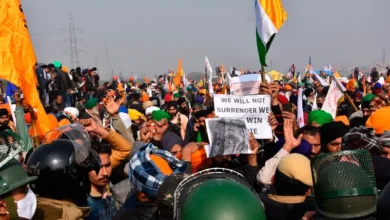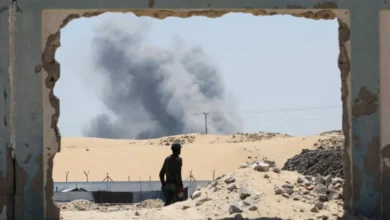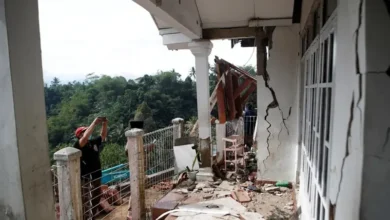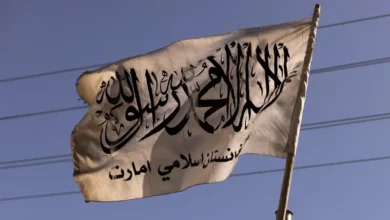Does a Dalit’s life have no value?’: The murder of a teenage girl in India
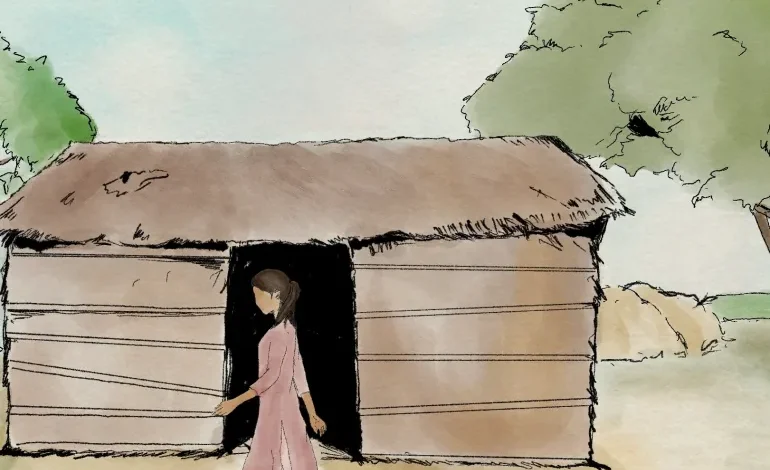
As protesters took to the streets of Kolkata to demand justice for a trainee doctor who was raped and murdered on August 9, 55-year-old Nirali Kumari* gasped for breath in her small wooden hut 480km (300 miles) away. She hadn’t left her home – or even her bed – since the body of her 14-year-old daughter was found on the morning of August 12 – naked, bloodied and with her hands and legs tied.
Kumari says “six men wielding knives” entered her home on the night of August 11. “[They] threatened us and kidnapped my daughter. She was sleeping right here, with her elder sister,” she adds, before breaking down.When Al Jazeera first met Kumari, she was so overwhelmed by grief that she had not eaten in the five days since her daughter’s body had been discovered. Her wrist was bloodied and bandaged from the cannula feeding her fluids. She fainted from time to time in the suffocating heat of her hut, even as a relative waved a handheld fan over her.
‘Tool of oppression’
Kumari’s daughter’s body was found in a paddy field near her home in the area of Paroo in Muzaffarpur district, Bihar, one of India’s most populous states.
The murder of the teenager – who belonged to the Dalit community, the least privileged in India’s complex caste hierarchy, a position that has enabled its persecution for centuries – has put the entire village on edge.
Kumari’s family lives in a village in Paroo, located nearly 80km (50 miles) from the state capital, Patna. The village is home to fewer than 5,000 people and is surrounded by vast paddy fields. Colourful cement houses belonging to the dominant Yadav community, an estimated 4,500 people, sit on either side of the potholed, date tree-lined main road that runs through the village. Towards the end of the road, 18 grass and bamboo huts house the local Dalit community, which numbers about 80.
A historical system of feudal rule is still a lived reality for millions of people in Bihar, and Paroo is no exception. Across the state, Dalit families depend on dominant caste landlords to earn a living by working on their land for a daily wage. Landowning families often lend money at high interest rates, which can trap families in debt.
In the past, there have been moments of friction between the communities. Last year, during Holi, the Hindu festival of colours, Dalit children crossed over to the “Yadav side” of the village while playing with coloured powders, causing arguments between the communities. The police had to intervene to prevent an escalation, a Dalit resident tells Al Jazeera.
The primary defendant in the murder case, Sanjay Rai, 42, belongs to the Yadav community and is an influential landlord. The men who abducted the girl were masked, but the family identified Rai by his voice and build. The defendant is well-known in the village.
Local media first reported that Kumari’s daughter was gang-raped and murdered after witness accounts and the family reporting the crime to the Paroo police.
Indian law prohibits revealing the identities of victims and their families in sexual violence cases. However, at a news conference on August 19, the police announced they were ruling out rape based on the findings of the postmortem report and the investigation. They also shared that they had arrested Rai and four men from the Dalit community for murder and conspiracy to murder.
‘Does a Dalit’s life have no value?’: The murder of a teenage girl in India
Family members of the 14-year-old say she was raped and murdered. As they seek justice, social tensions erupt in their village.
![[Jawahir Al-Naimi/Al Jazeera]](https://www.aljazeera.com/wp-content/uploads/2024/10/Hut-2-1729864641.jpg?resize=770%2C513&quality=80)
Muzaffarpur, India – As protesters took to the streets of Kolkata to demand justice for a trainee doctor who was raped and murdered on August 9, 55-year-old Nirali Kumari* gasped for breath in her small wooden hut 480km (300 miles) away. She hadn’t left her home – or even her bed – since the body of her 14-year-old daughter was found on the morning of August 12 – naked, bloodied and with her hands and legs tied.
Kumari says “six men wielding knives” entered her home on the night of August 11. “[They] threatened us and kidnapped my daughter. She was sleeping right here, with her elder sister,” she adds, before breaking down.
Keep reading
list of 4 items
Gisele Pelicot tells mass rape trial ‘it’s not us who should feel shame’
Report shows more women are using telehealth to get around abortion ban
Tigray war rape victims turn to Rwandan genocide survivors to heal trauma
In a close presidential race, Trump is strategically ambiguous on abortion
end of list
When Al Jazeera first met Kumari, she was so overwhelmed by grief that she had not eaten in the five days since her daughter’s body had been discovered. Her wrist was bloodied and bandaged from the cannula feeding her fluids. She fainted from time to time in the suffocating heat of her hut, even as a relative waved a handheld fan over her.
![[Jawahir Al-Naimi/Al Jazeera]](https://www.aljazeera.com/wp-content/uploads/2024/10/Bed-2-1729864635.jpg?w=770&resize=770%2C433&quality=80)
‘Tool of oppression’
Kumari’s daughter’s body was found in a paddy field near her home in the area of Paroo in Muzaffarpur district, Bihar, one of India’s most populous states.
The murder of the teenager – who belonged to the Dalit community, the least privileged in India’s complex caste hierarchy, a position that has enabled its persecution for centuries – has put the entire village on edge.
Kumari’s family lives in a village in Paroo, located nearly 80km (50 miles) from the state capital, Patna. The village is home to fewer than 5,000 people and is surrounded by vast paddy fields. Colourful cement houses belonging to the dominant Yadav community, an estimated 4,500 people, sit on either side of the potholed, date tree-lined main road that runs through the village. Towards the end of the road, 18 grass and bamboo huts house the local Dalit community, which numbers about 80.
A historical system of feudal rule is still a lived reality for millions of people in Bihar, and Paroo is no exception. Across the state, Dalit families depend on dominant caste landlords to earn a living by working on their land for a daily wage. Landowning families often lend money at high interest rates, which can trap families in debt.
In the past, there have been moments of friction between the communities. Last year, during Holi, the Hindu festival of colours, Dalit children crossed over to the “Yadav side” of the village while playing with coloured powders, causing arguments between the communities. The police had to intervene to prevent an escalation, a Dalit resident tells Al Jazeera.
The primary defendant in the murder case, Sanjay Rai, 42, belongs to the Yadav community and is an influential landlord. The men who abducted the girl were masked, but the family identified Rai by his voice and build. The defendant is well-known in the village.
Local media first reported that Kumari’s daughter was gang-raped and murdered after witness accounts and the family reporting the crime to the Paroo police.
Indian law prohibits revealing the identities of victims and their families in sexual violence cases. However, at a news conference on August 19, the police announced they were ruling out rape based on the findings of the postmortem report and the investigation. They also shared that they had arrested Rai and four men from the Dalit community for murder and conspiracy to murder.
The girl’s killing and the authorities’ handling of the case have sparked tension in the village.
Dalit and human rights activists, including some from Paroo, decry the implication of Dalit men, seeing it as the result of pressure and influence from members of the dominant caste to conceal the attackers’ identities and silence their community.
They see the girl’s murder as a clear example of a crime inflicted by the dominant caste on the Dalit community and the case as one resulting from systemic caste oppression.
“Dominant castes have long used [violence, especially] sexual violence, as a tool of oppression. They see themselves as powerful because of their social identity,” says Manjula Pradeep, director of campaigns at the Dalit Human Rights Defenders Network (DHRDN). “Their perception depends on the subjugation of rights of the people from the lower castes.”
‘Kept this family together’
The girl’s schoolbag lay on a wooden bed, and her school dress hung from a plastic hook on the wall. Her elder sister stared at the bag while their mother wailed in the room filled with visitors.
Kumari says her daughter was innocent and sincere. “Just another child,” she says.
“She was beautiful like a flower but also a straight talker,” Kumari recalls, referring to how her daughter would speak up when she felt she needed to. “She was the child who kept this family together. From my medicines to managing our meals, she was young but could do it all.”
The ninth-grade student wanted to complete her high school education, but she often struggled to find time to attend school while helping her parents, both daily-wage labourers, by working in the rice fields and doing chores at home.
Not everyone in the village knew the girl before her killing. But Suraj*, a neighbour of the family who requested his name be changed, fearing repercussions from dominant caste villagers, says Rai has a reputation as “a womaniser”.
Rai had been fixated on the teenager and had pressured her to marry him, the victim’s relatives tell Al Jazeera. “He offered us a tractor and some money,” Kumari explains.

